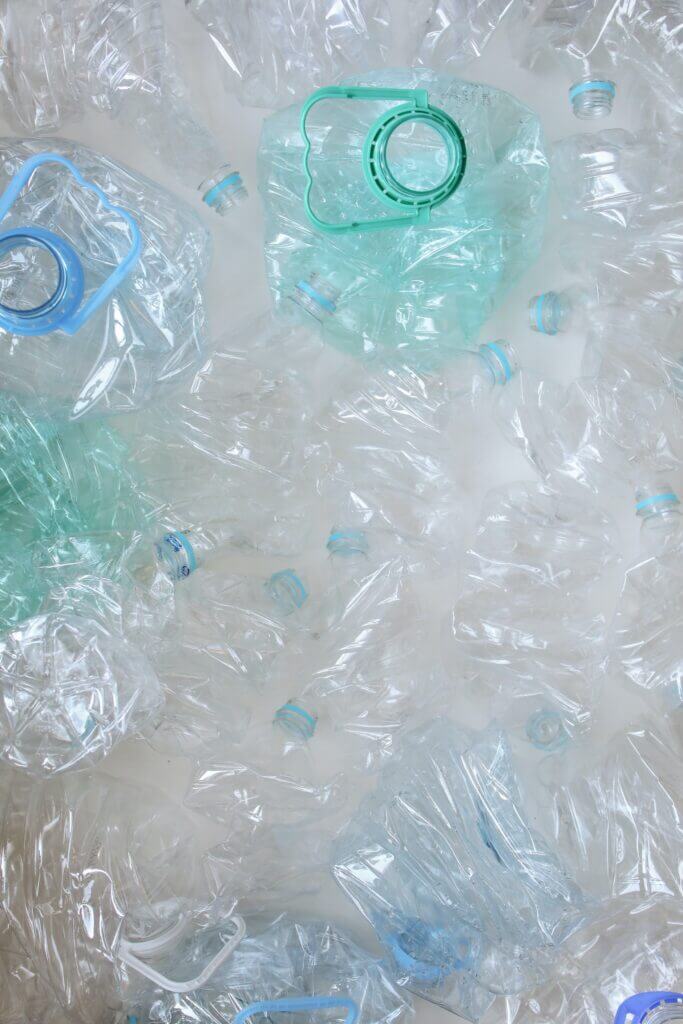Last updated on May 22nd, 2024 at 10:59 am
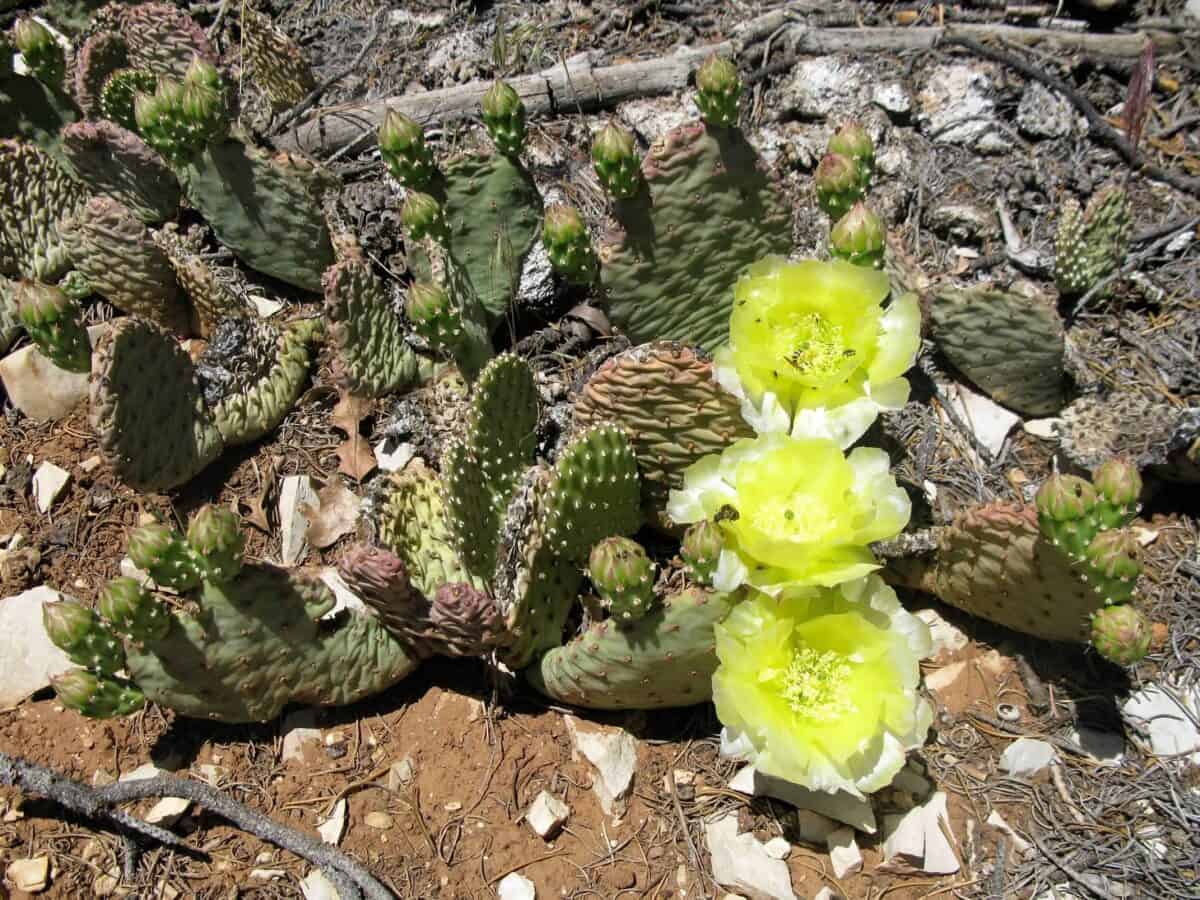
Sustainable Gardening
My Top Picks for Easy & Beautiful Drought-Tolerant Plants
As a gardener in Utah, the second-driest state in the U.S., I am always on the lookout for drought-tolerant plants in order to conserve water while maintaining a full, beautiful landscape. Fortunately, there are plenty of amazing, interesting choices.
Drought-tolerant landscaping doesn’t have to consist of rocks and cacti, although that is certainly one route to go. However, many people mistakenly think that this is the only option when xeriscaping. But by definition, xeriscaping is a landscaping strategy that reduces or eliminates water use; it does not necessarily equal a desertscape. I’m here to tell you that it is absolutely possible to plant a lush, full, colorful garden that thrives on very little water.
In general, native plants are among the most best drought-tolerant choices as they are naturally adapted to local climate, soil, and moisture levels. For those of us who live in dry areas, this is especially key as we look to conserve water.
Try the National Wildlife Federation’s Native Plant Finder to discover native options in your area, or use the resources provided by your local extension office. Visit local gardens to see these plants up close and get inspired for planting design ideas.
Want to learn more about how to create a sustainable garden? Click here.
I’ve experimented with many plants over the years, and have killed plenty in the process. I have developed an affinity for many plants, and in my experience, the plants listed here are among my favorites. These picks are readily available and are reliable choices that are good choices for beginners and experts alike.
I’m proud to say that almost all the photos on this page are of plants in my own yard; those that aren’t will be changed when I can catch the rest in their prime.
First, let’s start with my favorite full sun drought-tolerant plants.
Full sun drought-tolerant perennials
A waterwise landscape does not need to be drab, boring, or fully of spiky plants that will hurt you lest you take a wrong step. A vast array of bright, drought-tolerant flowers that add interest and beauty to your landscape are widely available. Nearly all of my favorites drought-tolerant perennials are also exceptional pollinator plants, attracting bees, butterflies, and even hummingbirds.
Penstemon
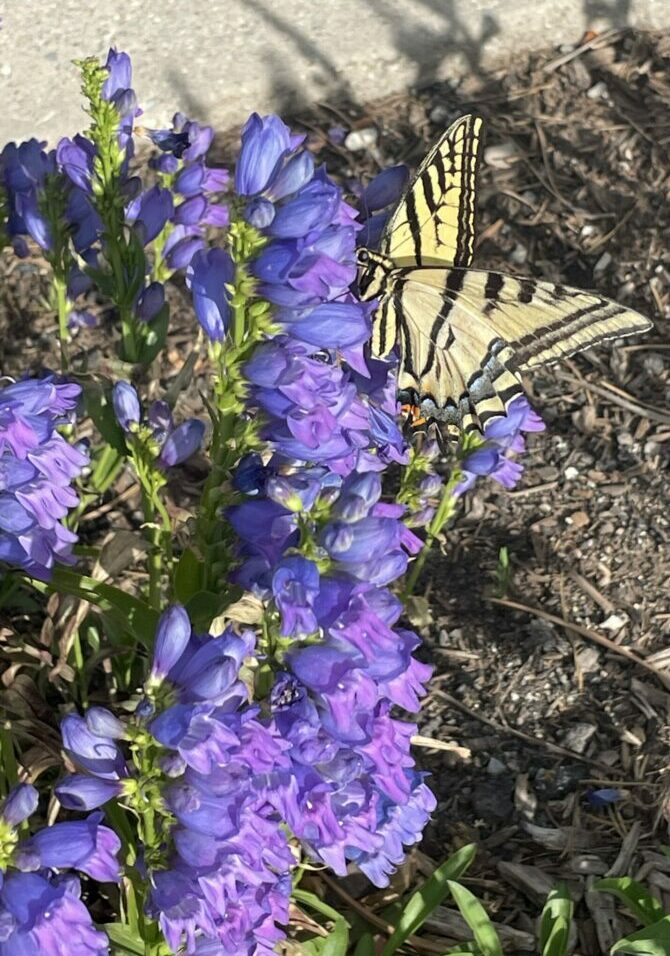
Penstemon, or beardtongue, is a must in a drought-tolerant landscape. This huge class of flowers is very hardy and found in a variety of sizes and colors for both flower and foliage. You can’t go wrong with this flower that is a favorite for bees, butterflies, and hummingbirds.
Here in Utah we have over 100 native varieties of penstemon, the most of any state in the country.
Firecracker penstemon is a popular native species. Another great native that I have in my yard is Rocky Mountain Penstemon, which is a lovely blue color (pictured).
Other non-native penstemon cultivars in my yard include pineleaf penstemon (P. pinifolius), ‘Pike’s Peak Purple’, and ‘Pocahontas.’
Read about penstemon care here.
Agastache
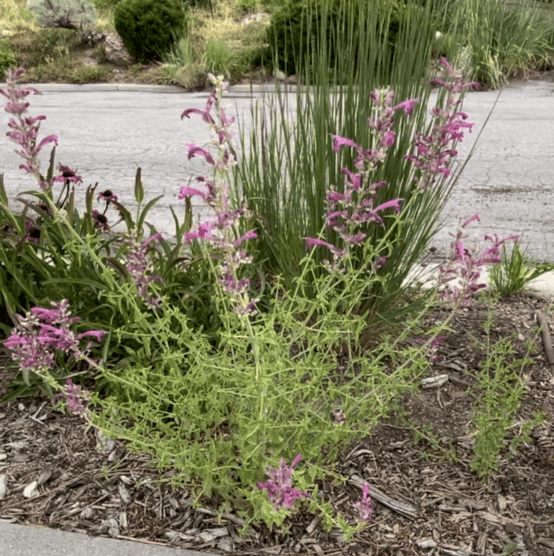
Hyssop/Hummingbird mint (Agastache) is one of my most favorite flowers. It comes in a variety of colors and smells SO good. The tubular flowers attract hummingbirds probably more than any other flower in my yard.
Learn about agastache care and cultivars at High Country Gardens.
Milkweed

Milkweed (Asclepias) is of particular importance as it is the only foodsource for monarch catepillars. This is especially vital when considering the monarch population has declined by 90% since 1997. Popular varieties include showy milkweed (A. speciosa), swamp milkweed (A. incarnata), both with pink flowers, and butterfly weed (A. tuberosa) with orange blooms (pictured).
Collect seed pods in the fall when they become dried and start to crack open. This will help prevent the spread where you don’t want them, and also make some other people happy when you share. The seeds are easy to germinate and there are always people who will take them off your hands.
Coneflower
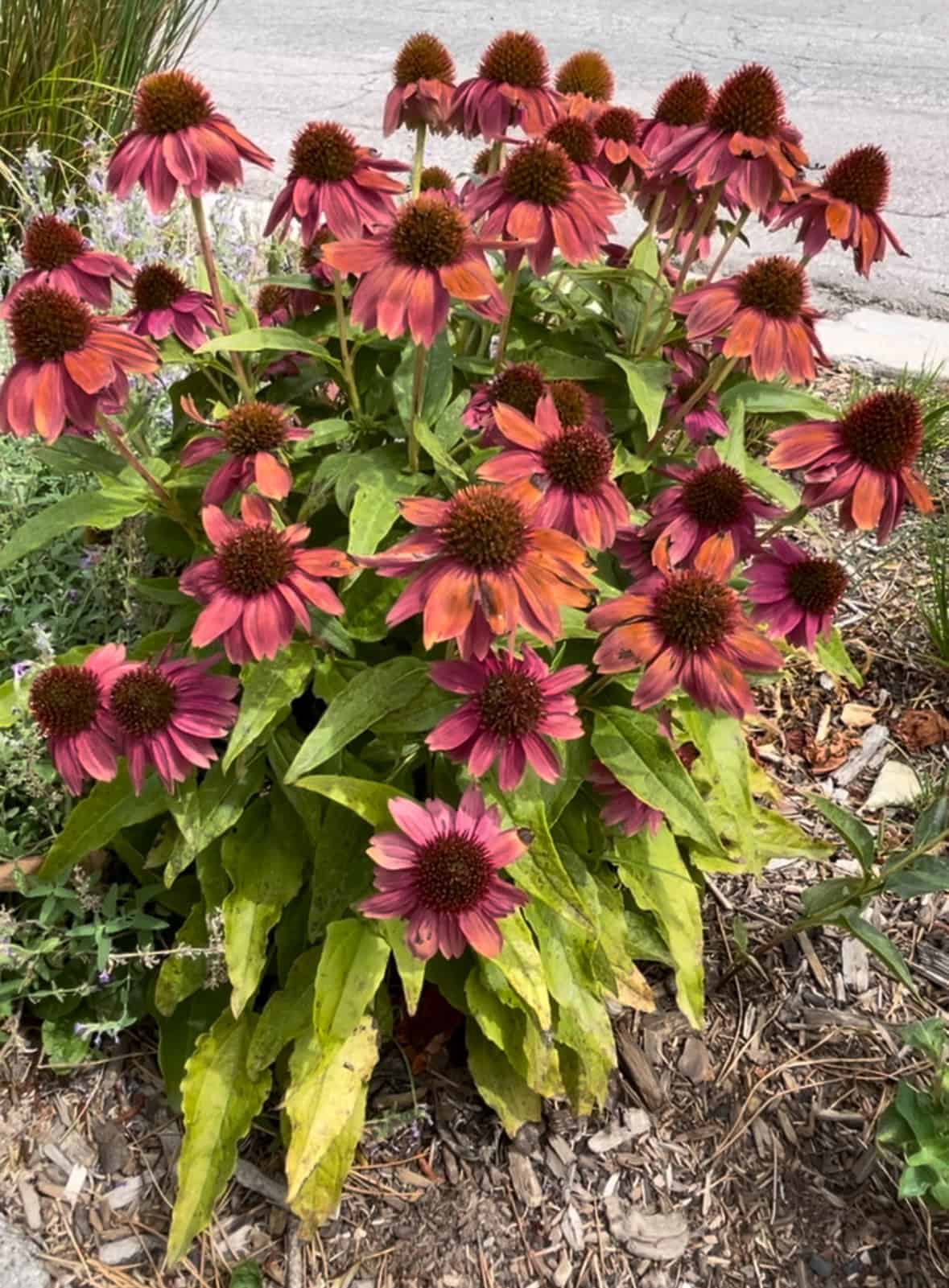
Coneflower (Echinacea) blooms come in a daisy-like form, but with a much more prominent center. Flowers are most commonly found in purple, but cultivars can be pink, red, orange, white, yellow, and even green. The seedheads are a great food source for birds during the colder months. Make sure to check the plant size on the tag, as some varieties grow quite tall while others stay more compact.
Find coneflower care information here.
Coreopsis
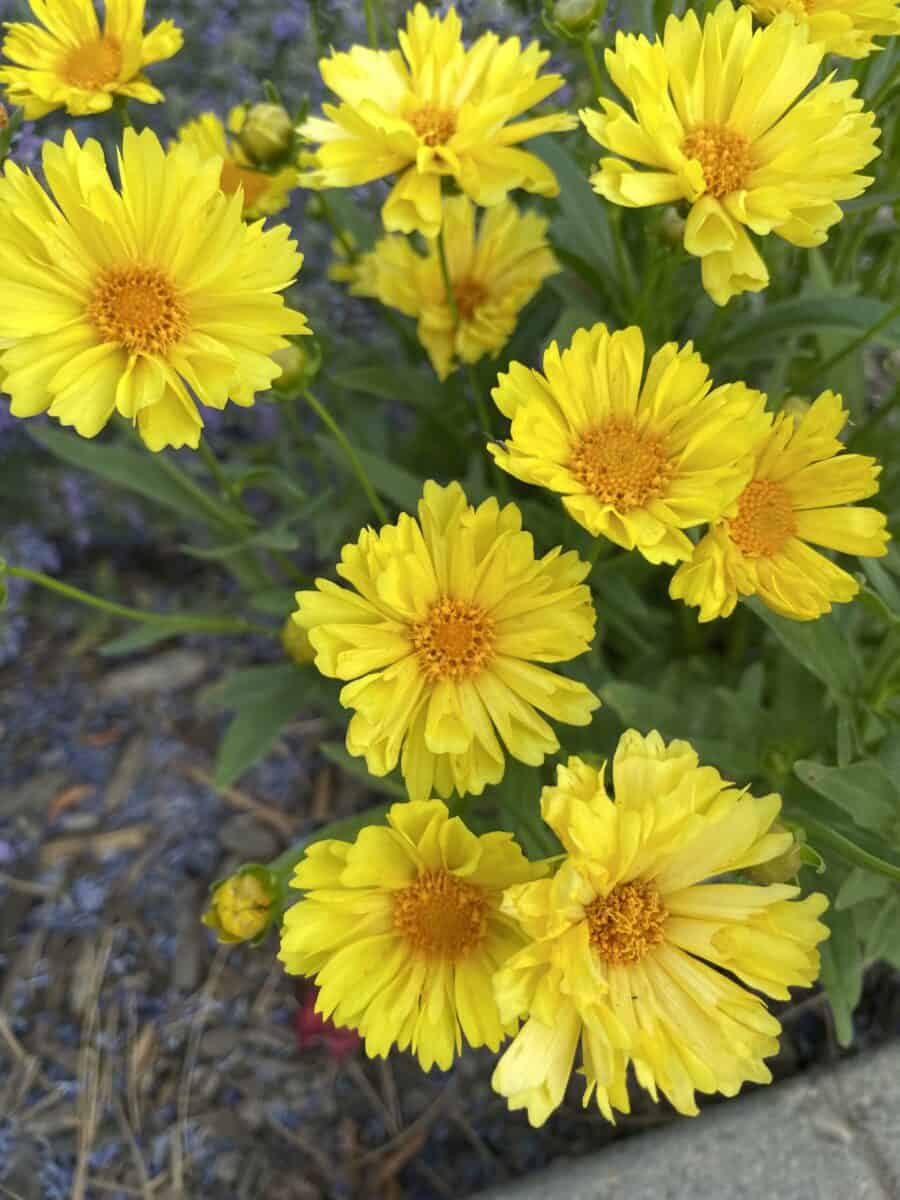
Tickseed (Coreopsis) are happy flowers that are almost always solid yellow or gold, although I have seen a variety with red centers and another with pink blooms.
Keeping the plant deadheaded will ensure continuous blooms throughout the summer season.
‘Moonbeam‘ coreopsis is a nice variation from most other cultivars. It has small delicate flowers and thready foilage.
Learn more about coreopsis care here.
Russian sage
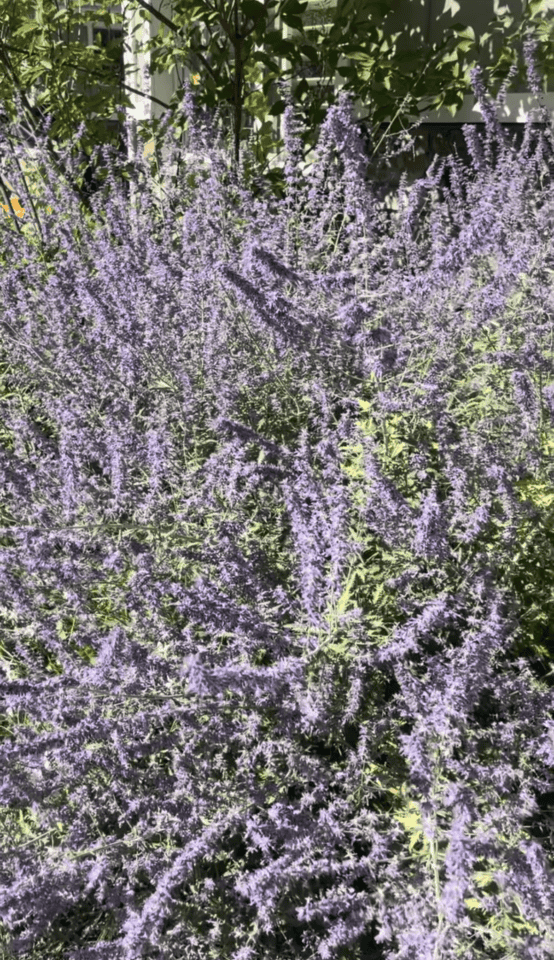
Russian sage (Perovskia) is a contender for the top attractor for bees. From summer until frost, the long silvery purple flower spikes of this plant are swarming with pollinators. These blooms also give the garden a great burst of texture.
The base of the plant is woody, and it can grow quite large so plan accordingly when planting. The biggest downside to Russian sage is that it does like to send out new plants, which isn’t a problem if you get them early, otherwise they root deeply. This characteristic turns many people off of this plant, but because of its appearance and superb pollinator food source, I’ve always been a fan.
Learn more about growing Russian sage here.
Catmint
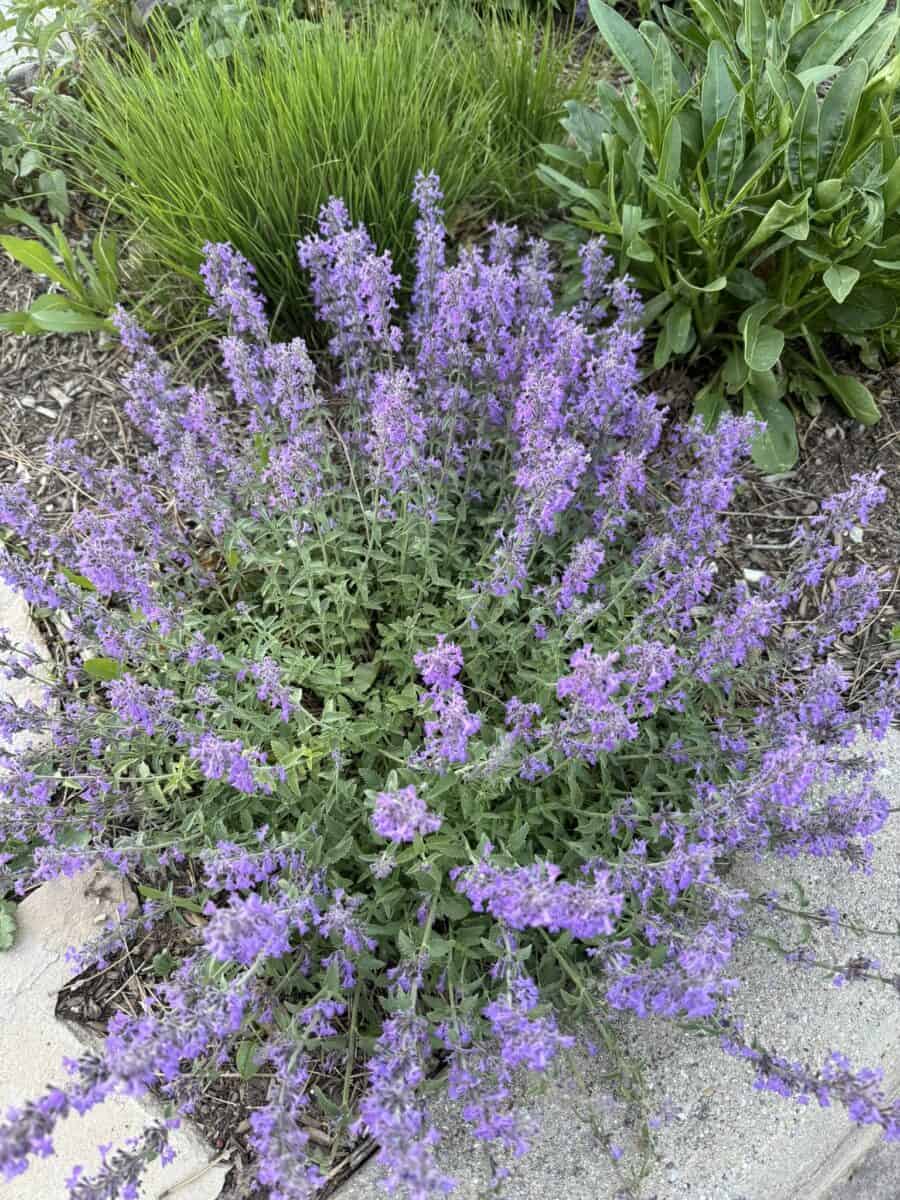
Catmint (Nepeta) is not to be confused with catnip–this plant does not attract cats. Its purple blooms are somewhat similar to Russian sage and also popular with bees and butterflies.
It is one of the earliest bloomers of these perennial flowers, starting in mid to late spring, making it a great early season pollinator plant. If you shear back the first round of growth it will bloom through the fall.
‘Walker’s Low‘ is a sizable catmint; for a smaller version try ‘Little Trudy‘.
Learn more about catmint care here.
Bee balm

Bee balm (Monarda) is primarily found in shades of pink or purple. Its fluffy flower attracts butterflies and of course bees.
Learn more here.
Lavender

Everyone is familiar with extremely popular, calming scent of Lavender (Lavendula), and there are over 400 cultivars to choose from. Make sure to select a variety suitable for your climate, unless grown as an annual or in a pot. Most French and Spanish lavender species will not survive in cold winter climates.
English lavender is the traditional choice, as well as the most hardy. ‘Munstead‘ and ‘Hidcote‘ are among the most common varieties you will encounter.
Read more about the types of lavender here.
Gaura
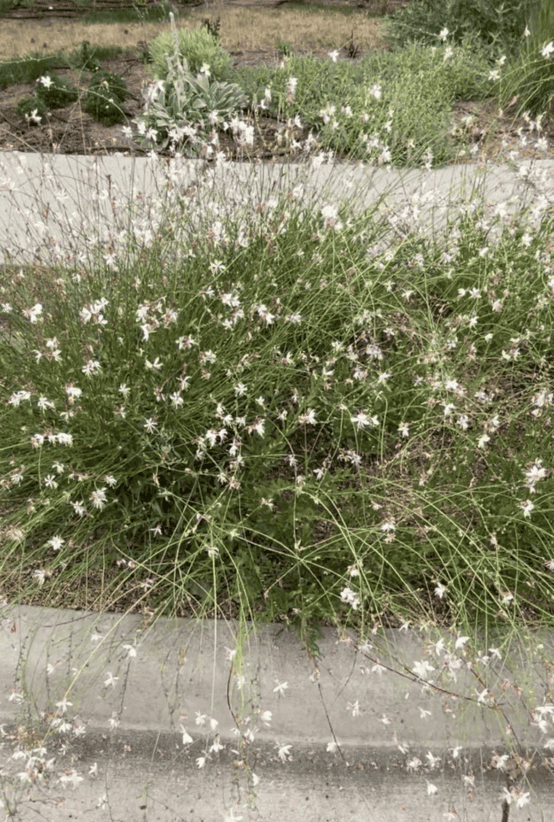
The long, wispy blooms of the wandflower (Gaura) are usually seen in white or pink. They are long blooming and a great pollinator plant.
This is another self-seeding plant, so make sure you pluck any unwanted seedlings early as they quickly develop a taproot that can make them hard to remove.
Learn more about gaura care here.
Yarrow
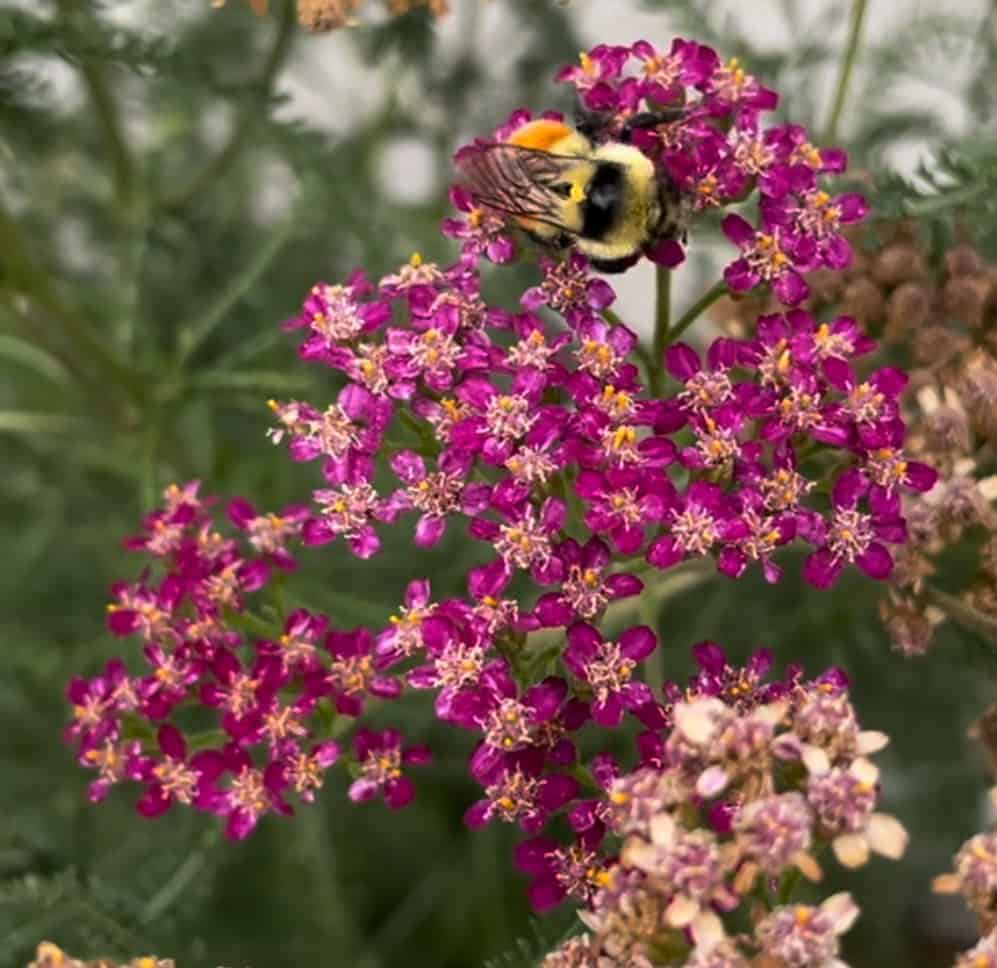
The tiny flowers of yarrow (Achillea) attract a wide array of beneficial insects, making it an outstanding natural pest control plant. In addition to pollinators, predatory insects like ladybugs, lacewings, and hoverflies are drawn to yarrow, thereby help control pest populations, such as aphids and caterpillars.
Plant varieties range from about three feet in height to some that are just inches tall and make a good groundcover. Blooms come in a range of colors.
Learn more about yarrow here.
Jupiter’s Beard
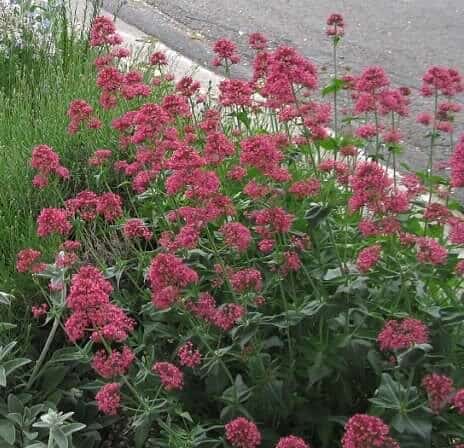
Also known as red valerian, Jupiter’s Beard (Centranthus ruber) is a very hardy plant that is a great beginner perennial; it was one of the first drought-resistant plants I grew on my own. Its dark pink blooms add color from late spring clear until frost.
It does self-sow somewhat prolificly, which is great to fill in large spaces, and isn’t much of a problem if you pull up unwanted baby plants relatively quickly. They develop a large taproot that can be tough to remove; this root is what makes them such a great low water plant.
Drought-tolerant perennials for shade
Finding plants for dry shade can be a challenging as options are somewhat limited compared to full sun. However, many of the full sun plants listed on this page can tolerate some light shade.
Coral Bells

Coral bells (heuchera) are one of my all-time favorite shade plants. The tiny flowers are unimpressive, but I am a sucker for colorful foilage, and coral bells don’t dissapoint. Their leaves found in lime green, gold, or various tones of purple and bright red really add some pop to darker areas in the garden. When planted closely together, they create a nice groundcover.
Geranium
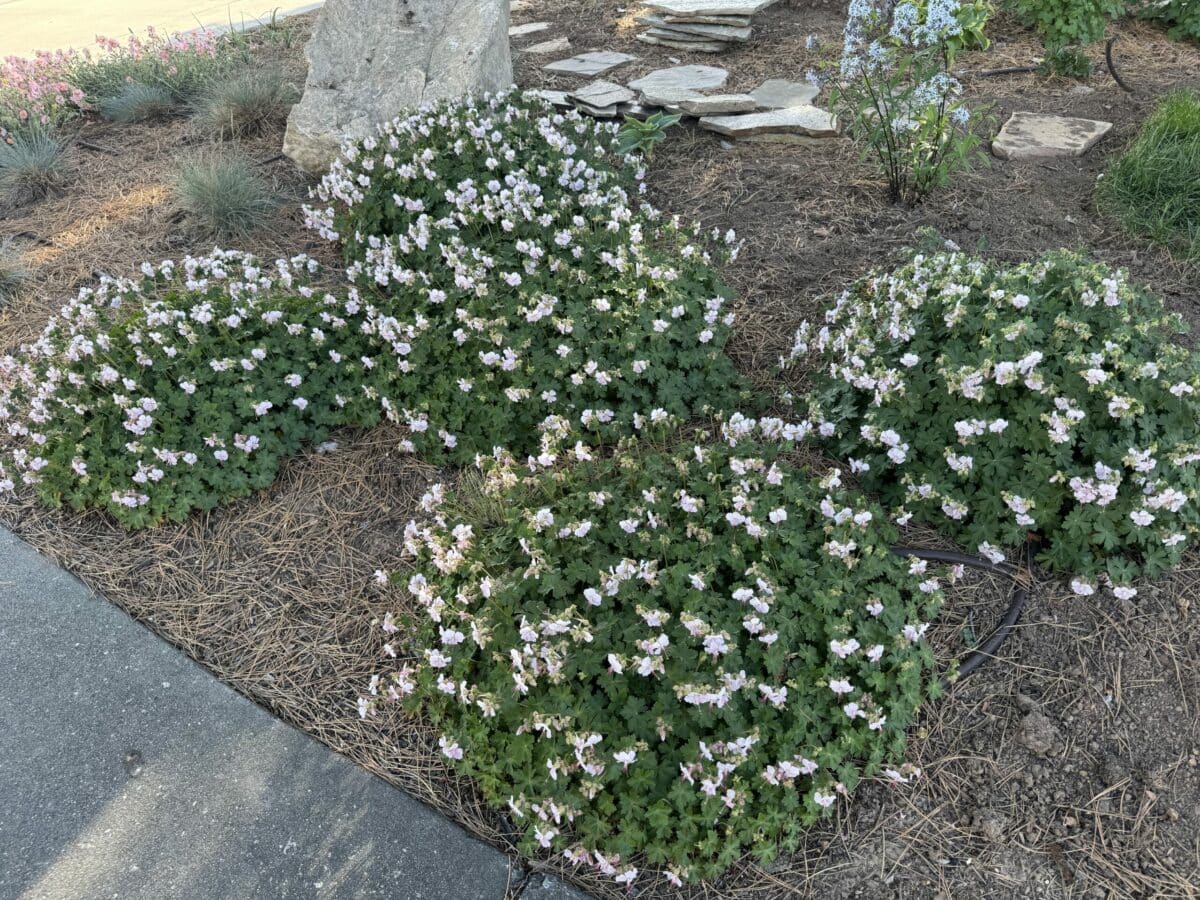
It is important to make the distinction between perennial geraniums, or cranesbill, and the annual type, which belong to the Pelargonium genus.
Hardy geraniums grown in low mounding shapes, most blooming from late spring into the summer, with some varieties blooming in the fall.
Epimedium
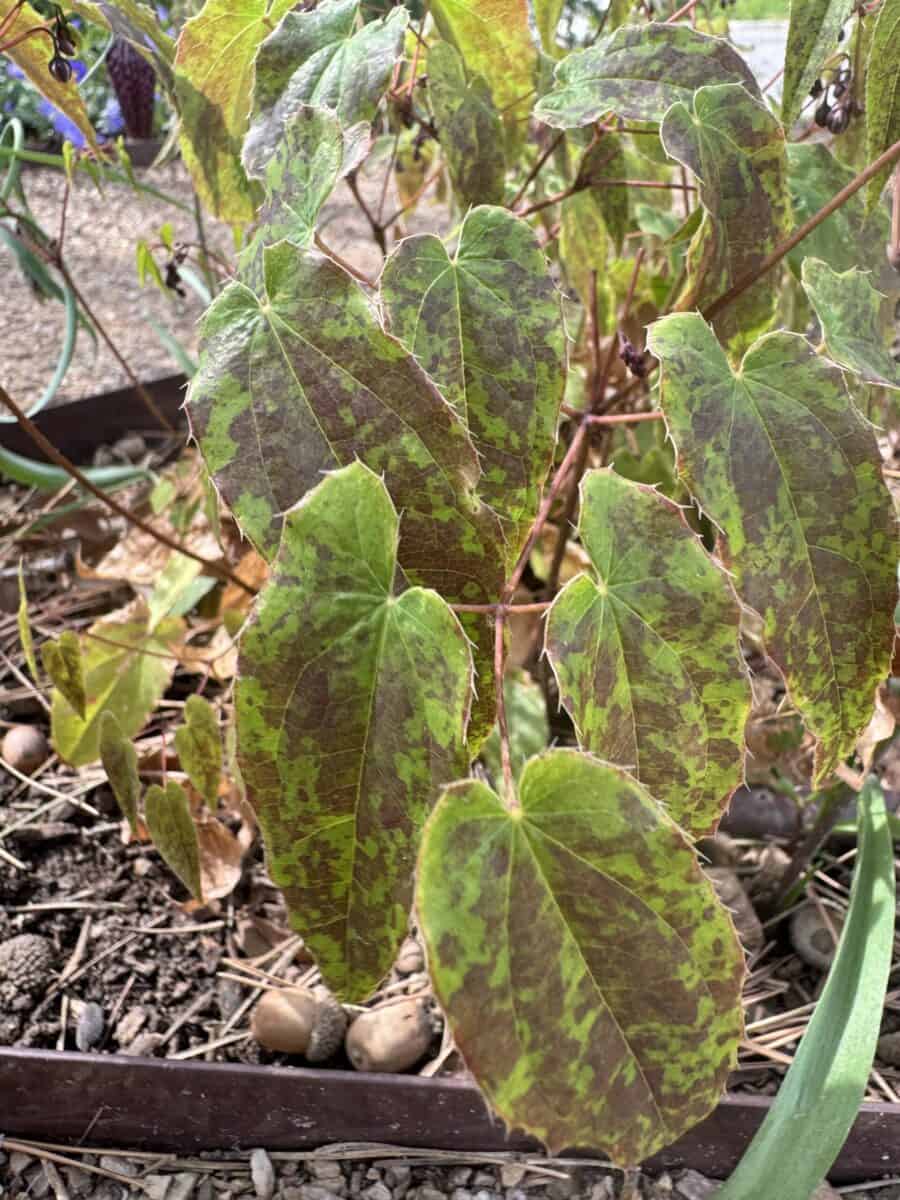
I love the heart shaped leaves of the epimedium. In the spring, the plant develops tiny, almost orchid-like flowers, but this plant is primarily grown for foliage. It is an especially nice addition to woodland gardens.
Drought-tolerant grasses
Little bluestem

The silvery blue blades of little bluestem (Schizachyrium) are a great addition to a garden bed. In the fall, the grass blades turn to red. ‘Blaze’ is the variety I have in my yard.
Blue grama

The best thing about blue grama grass (Bouteloua) is its interesting seed heads that develop at the end of the summer and into the fall. These unique heads stay more horizontal than others, and the golden color contrasts nicely with the blue gray foliage. Try ‘Blonde Ambition’.
Muhly

Muhly grass (muhlenbergia) is an attractive grass throughout the growing season, but it really becomes the star in the fall, when the seed heads develop a pink or red hue, creating a wispy rose-colored wonderland.
Ruby Muhly ‘Undaunted’ is a great variety to try.
Full sun drought-tolerant groundcovers
Thyme
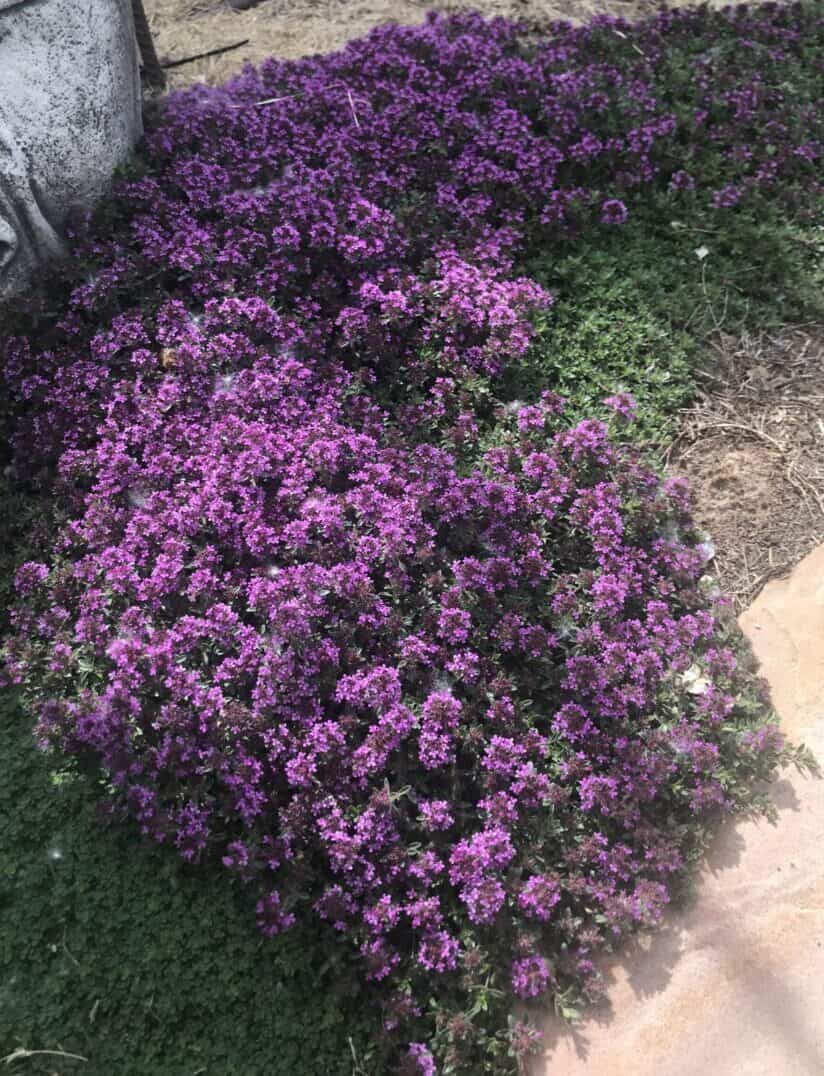
Thyme (Thymus) is one of the hardiest and easiest groundcovers to grow. I’ve even seen this used as a low water lawn alternative, as it withstands some foot traffic and spreads relatively quickly.
My favorite varieties are creeping thyme (pictured), which develops pink or purple blooms in the early summer, and elfin thyme, with a satisfying spongy texture.
Ice plant
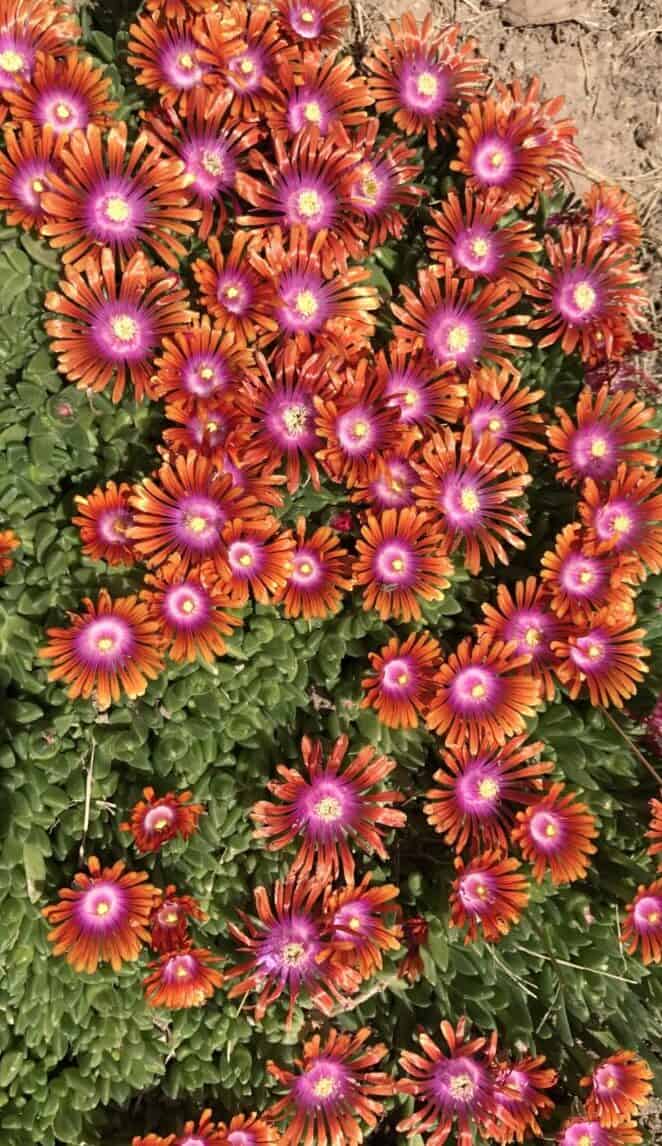
Ice plants (Delosperma) are very easy to grow, even in the poorest soils. When blooming, they form an impressive carpet of prolific bright color. My favorite variety is ‘Fire Spinner’, as pictured.
Turkish speedwell
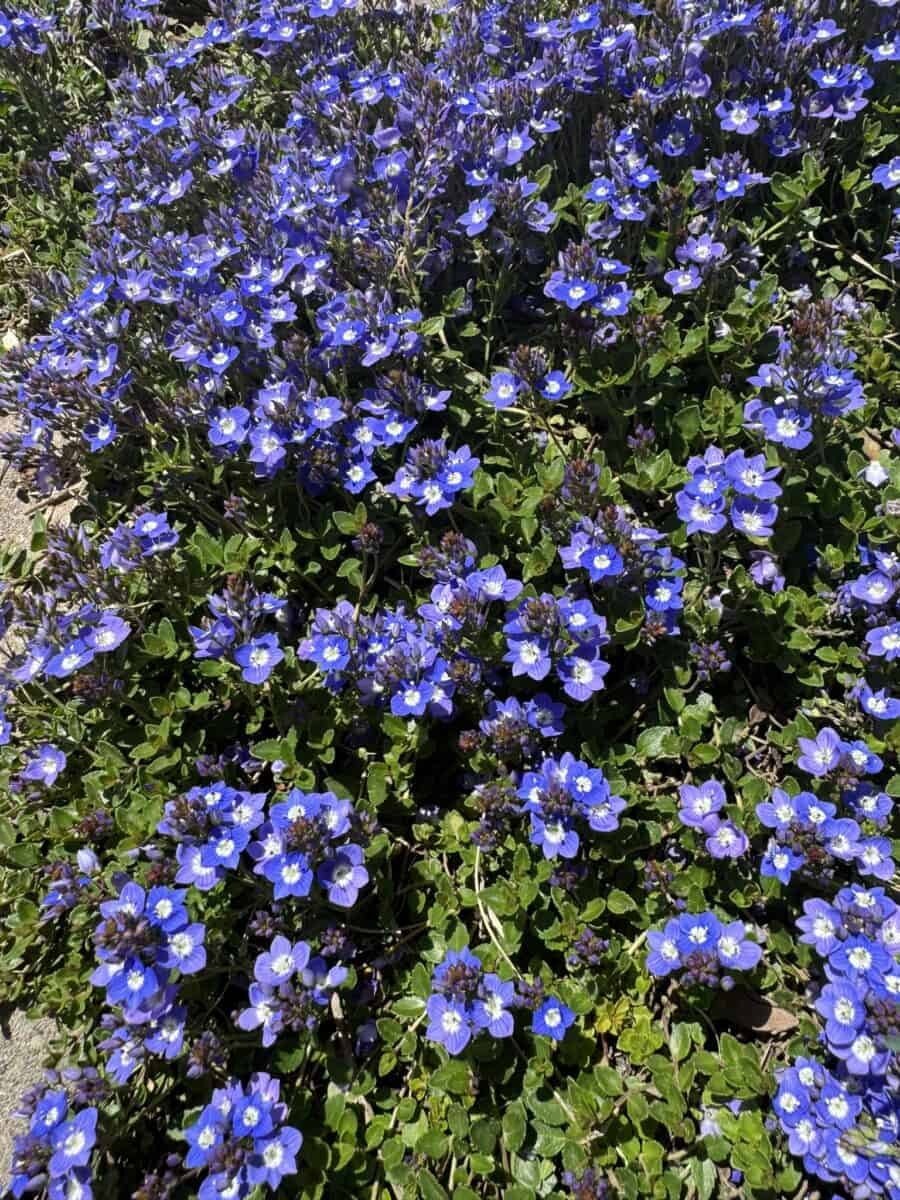
Over the past several years, Turkish speedwell (Veronica liwanensis) has become one of my most loved groundcovers. It spreads quickly and flaunts profuse tiny bright blue blooms in late spring/early summer. The foilage remains attractive when not in bloom, creating a dense evergreen mat of shiny green leaves.
Another benefit is that turkish speedwell can be planted just about anywhere. It loves full sun but I have found it does just as well in partial to full shade, where it adds some brightness to darker areas of the yard.
Sedum
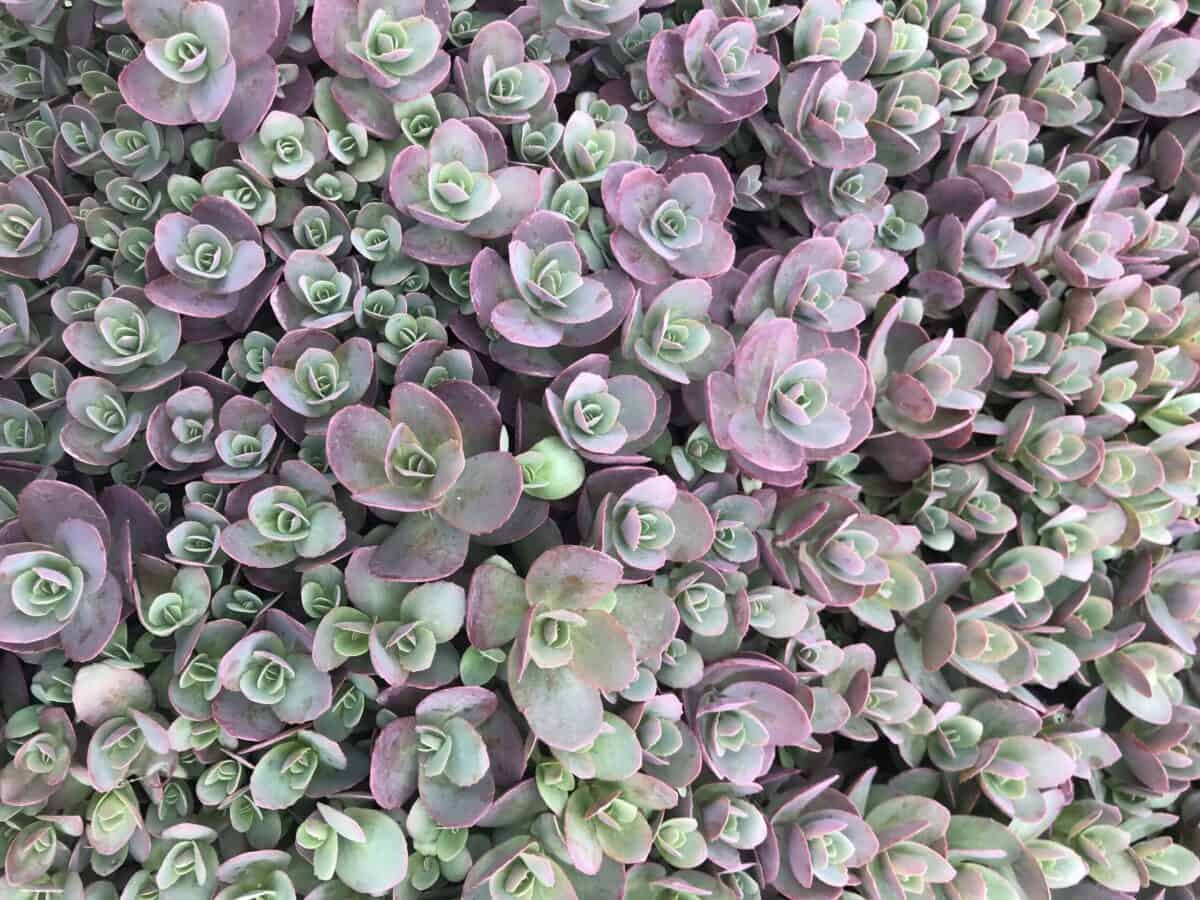
Sedum, or stonecrop, might just be one of the most diverse plant families. Grown mostly for their foliage, these plants are a type of succulent with an extensive catalog of textures and colors. Some are grown as small perennials, such as ‘Autumn Joy’ (which I highly recommend), while others make great groundcovers.
These plants are extremely easy to grow and will do well just about anywhere. They are great for rock gardens, love the sun and will take part shade as well.
Many of these tiny succulents are so hardy and easy to grow that any small pieces that have broken off the main plant, will root where they fall. I’ve gathered a handful that broke off when planting, literally throw them on some bare soil, and they developed roots and grew into new plants.
Hens & Chicks
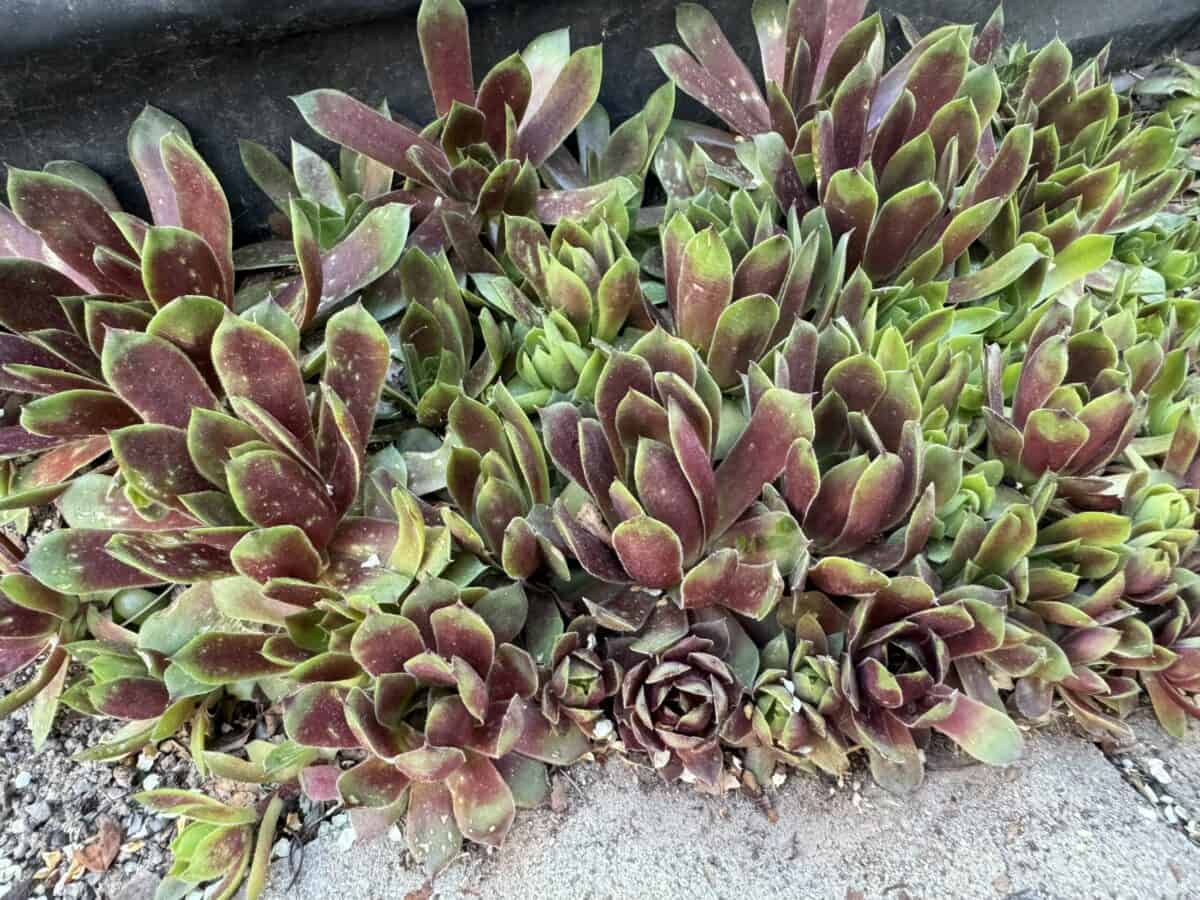
Hens and chicks (Sempervivum) grow a large mother rosette–the “hen”–and birth numerous smaller rosettes–the “chicks”–that go on to be the mothers.
Like sedum, these are great for filling gaps in between rock retaining walls and any other area that needs a ground cover.
Drought-tolerant ground cover for shade
Plumbago
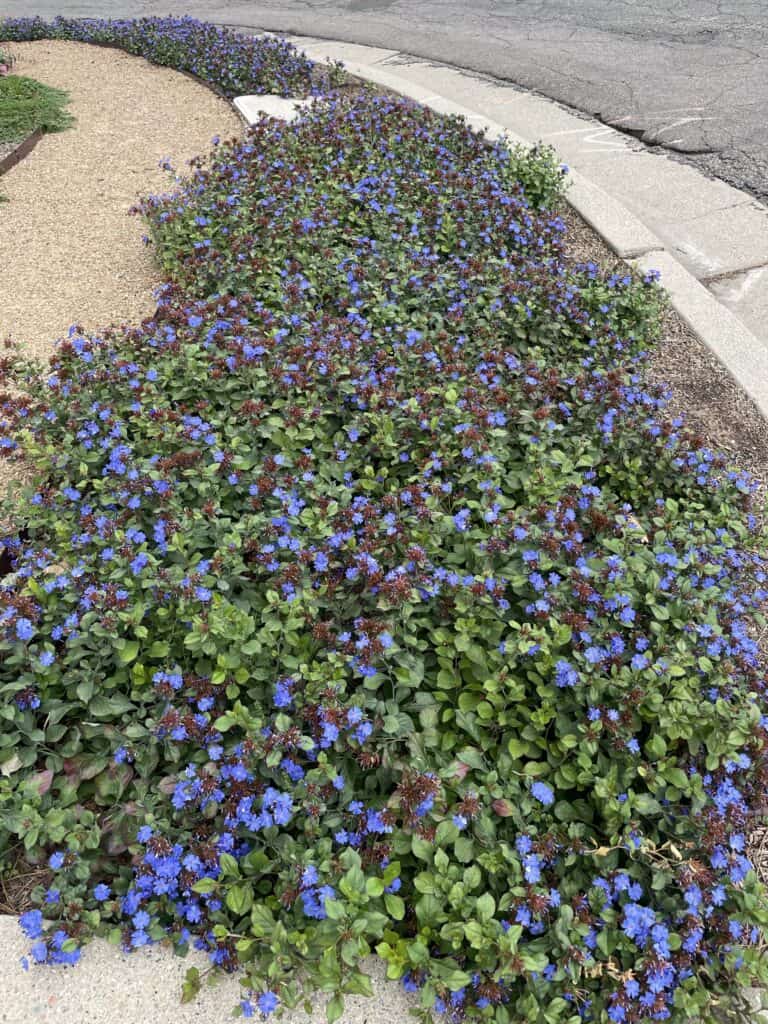
Like turkish speedwell, plumbago (Ceratostigma plumbaginoides) displays abundant blue flowers and can also thrive in full sun or shade. But unlike the former, it blooms in the fall, after which the foilage turns a beautiful red.
Plumbago spreads by underground runners, which makes it an especially great plant in areas that need help with erosion. However it can be aggressive, so it is best planted in contained areas (such as a park strip) or in places where you are ok with it spreading freely.
Lamb’s Ear
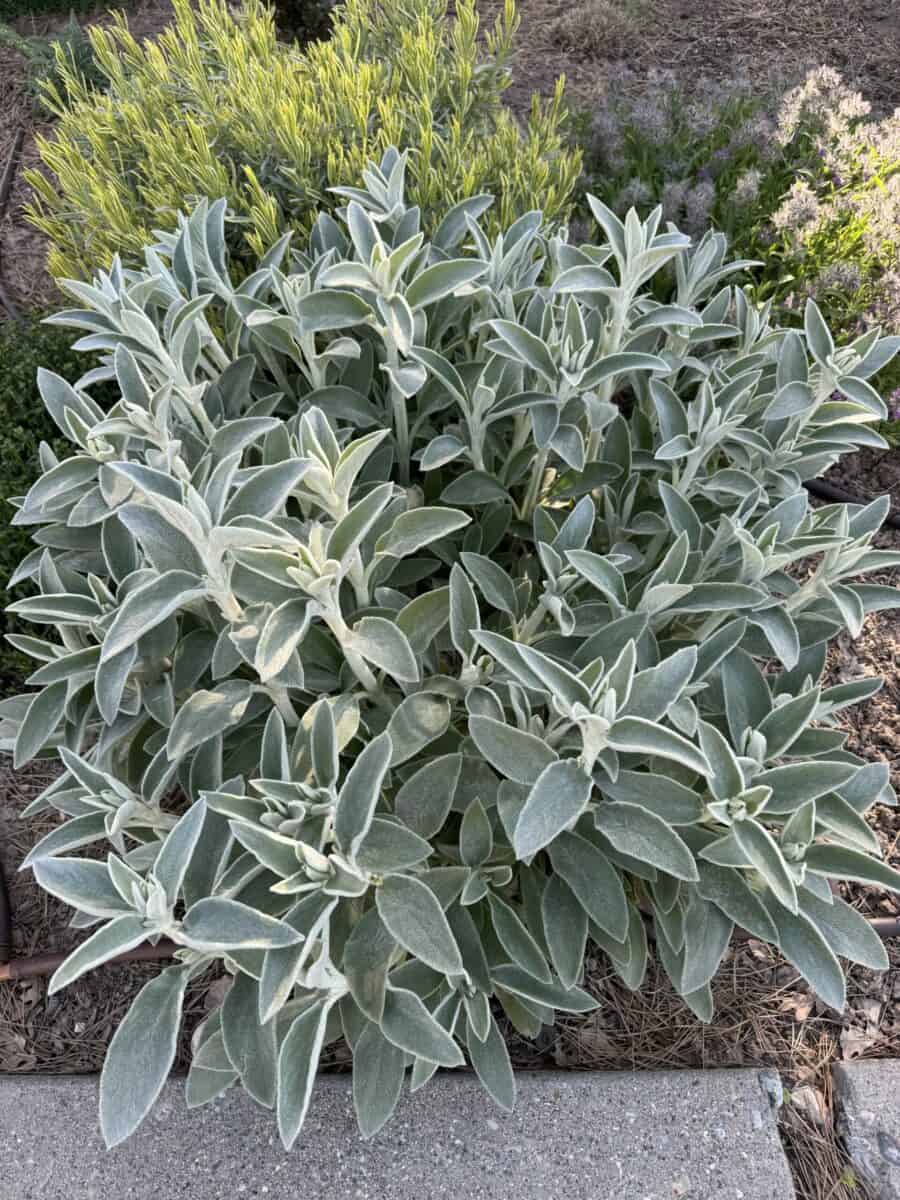
The leaves of lamb’s ear (stachys) feel just like what you would imagine a soft, velvety ear might feel like. The silvery green foilage is one of my favorite plants to add some texture to a flower bed. The plant does send up some spikes of purple blooms in the summer, but these are unremarkable.
Lamium

Also known as spotted dead nettle, lamium is a cute low-growing groundcover with pink or white flowers that bloom in summer. Even when not flowering, its silver-green foilage is an attractive addition to the garden.
Full sun drought-tolerant shrubs
Butterfly bush

As you can probably surmised, the butterfly bush (buddleja) is a favorite food source of the beautiful pollinators. Know that this plant has become an invasive species in some areas, especially the Pacific Northwest. However, commercial cultivars are sterile.
These shrubs range in size, from over 10 feet to dwarf varieties that remain a compact size, around 2-3 feet. Blooms are purple, pink, or white.
Bluebeard
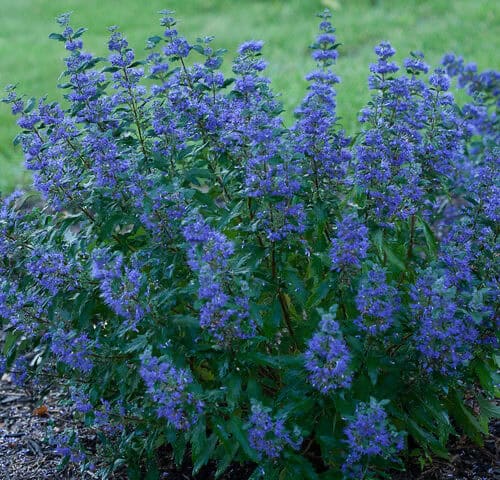
Bluebeard (caryopteris) is a fast-growing medium size shrub that blooms in late summer and fall. Its blue purple blooms are a magnet for bees.
Sumac

Some varieties of sumac (rhus) grow to about 6 feet high, but my favorite is a low-growing variety with a spreading habit: ‘Gro-Low‘ reaches about two feet in height, making it a fantastic groundcover, especially on slopes where it helps to control erosion.
This shrub requires little to no pruning and in the fall, the foliage transforms into a dazzling red.
Barberry
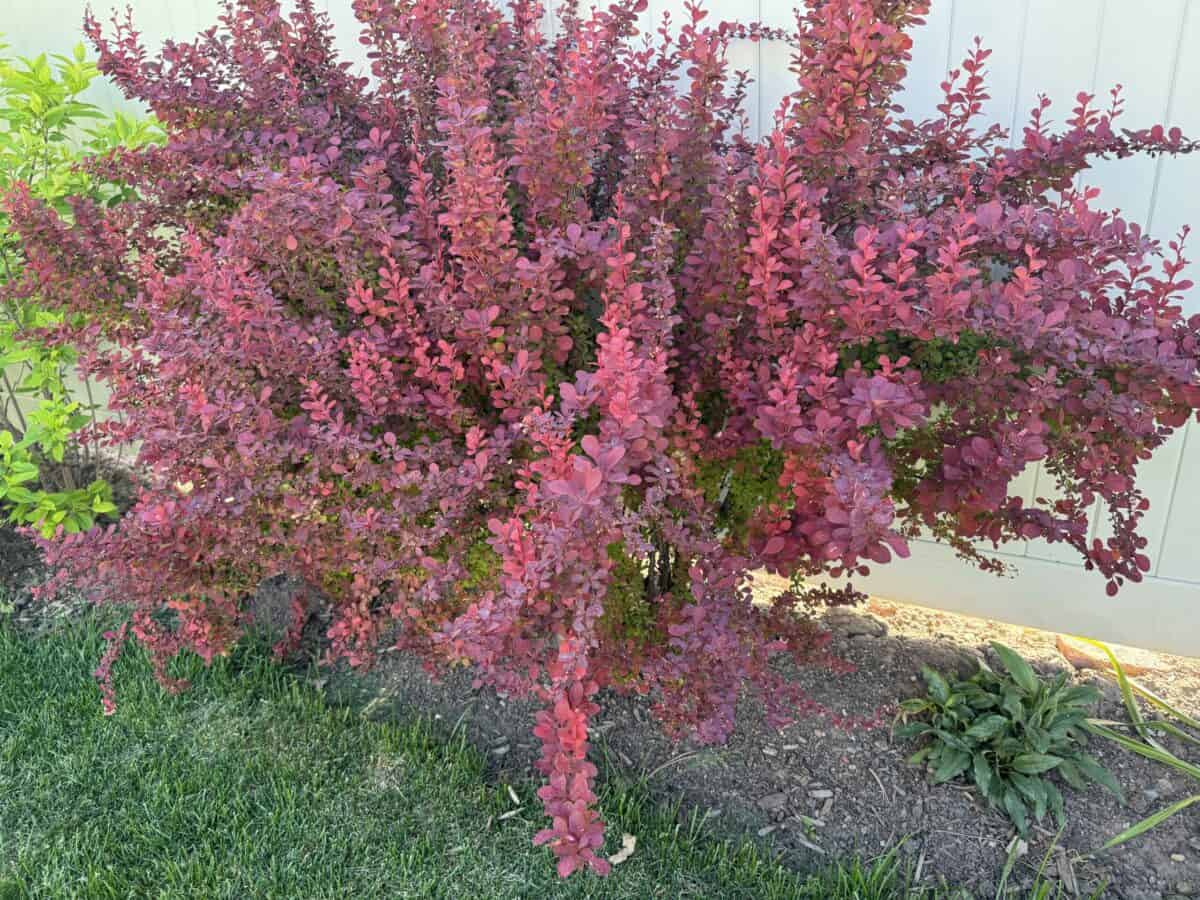
I have a love/hate relationship with the Barberry (berberis). These are one of the rare shrubs that offers bright red foliage which lends a very appealing contrast with its surroundings. They can also be found with lime green, yellow, or dark purple (some even almost black) leaves.
The bad news is that all of these shrubs host plentiful thorns, so any kind of contact is not a pleasant experience.
‘Orange rocket‘ is the variety pictured.
Elderberry
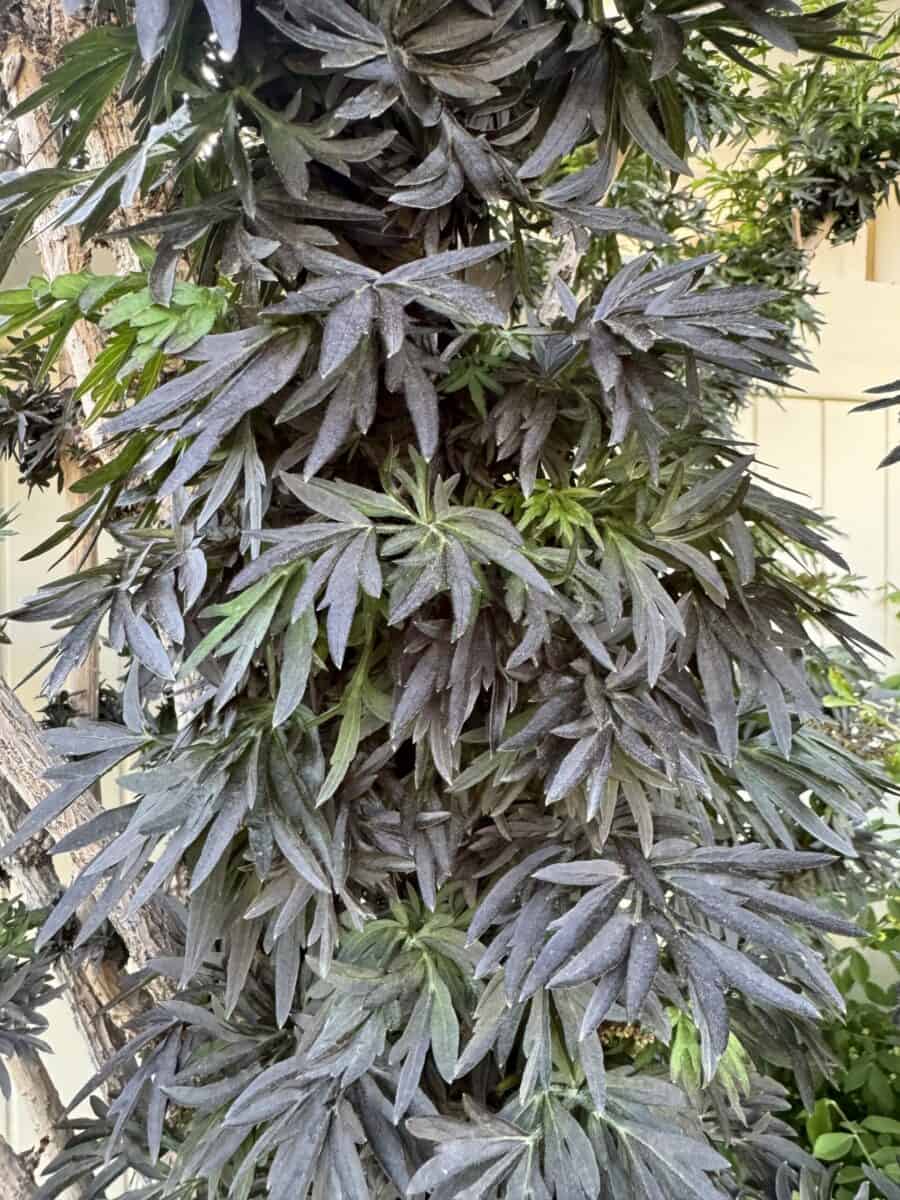
The foliage of the elderberry (sambucus) is interesting in both color and texture. Leaves are dark burgundy, almost black, and the shapes can almost resemble those of Japanese maple, especially the beautiful lacy foliage of ‘Black lace.’
Elderberries produce flowers and edible berries known for their health properties. These shrubs are on the larger side, around eight feet in height and width. There are some upright cultivars such as ‘Black Tower‘ and ‘Laced Up‘ (pictured) that remain 3-4 feet wide for smaller spaces.
Viburnum
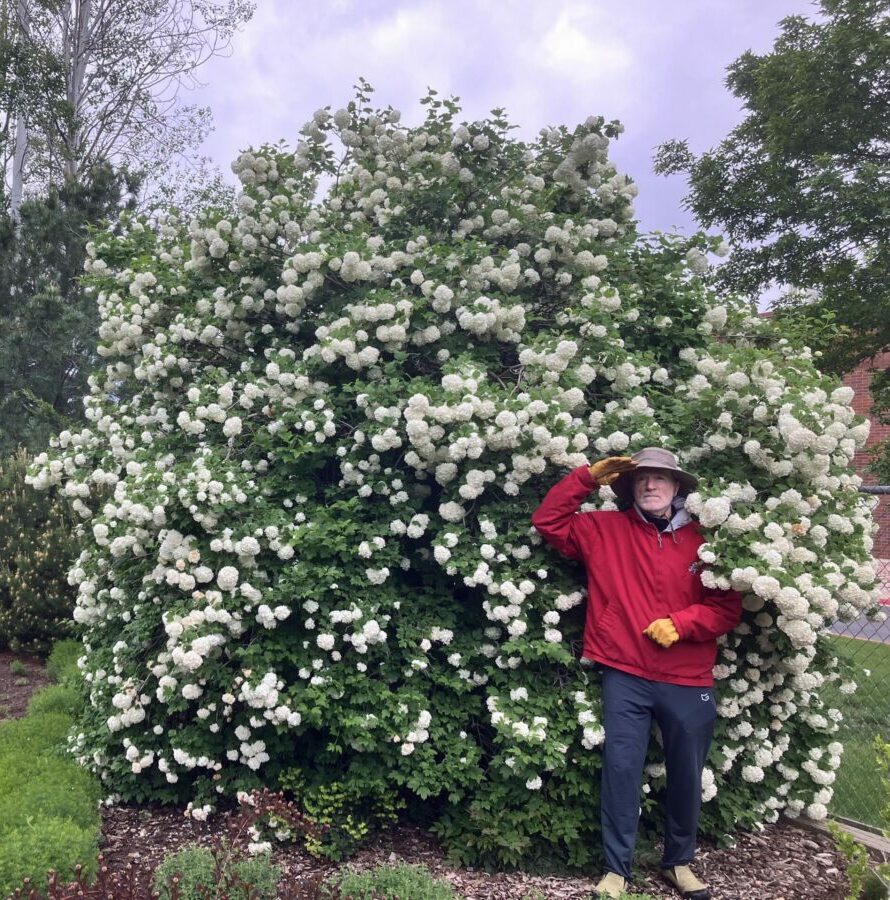
With over 150 varieties, viburnum offers a large array of choices. Some are evergreen while others deciduous, many produce berries, and all exhibit beautiful blooms. Most prefer full sun but some will do well in partial shade.
In general, these shrubs tend to be on the larger side; the Chinese snowball viburnum can grow to over 20 feet in height and width. The compact varieties are still around 5-6 feet in height and diameter. ‘Koreanspice’ is a popular smaller cultivar.
Discover more varieties from the Missouri Botanical Garden.
Drought-tolerant shrubs for shade
Daphne
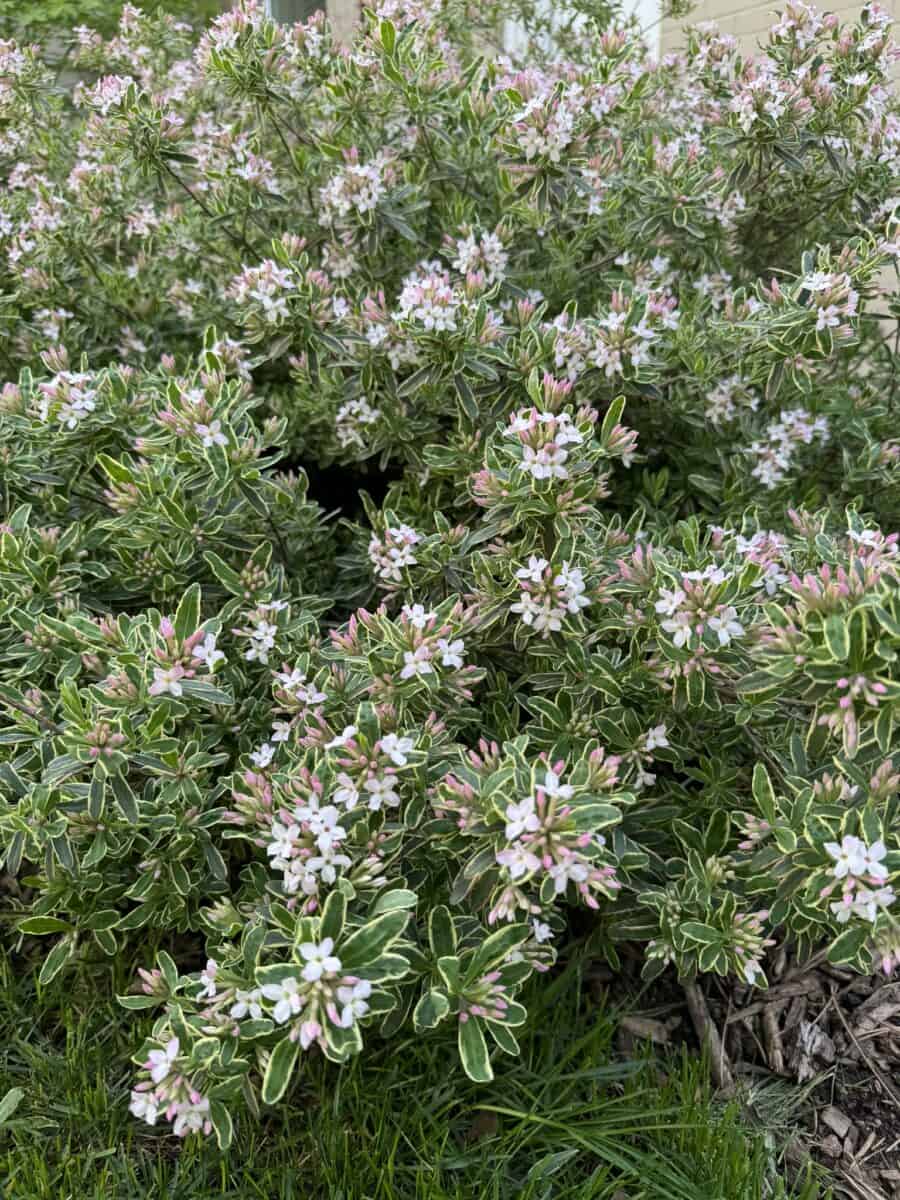
Daphne is an attractive, easy shrub that maintains a nice round shape without any pruning. ‘Carol Mackie’ is probably my favorite shrub in my yard. I love the variegated leaves, and in the spring it develops tiny pink blooms that smell divine.
It is recommended to grow daphne in full sun or part shade, but mine is located on the north side of my house and as you can see, it is very happy there.
Oregon Grape
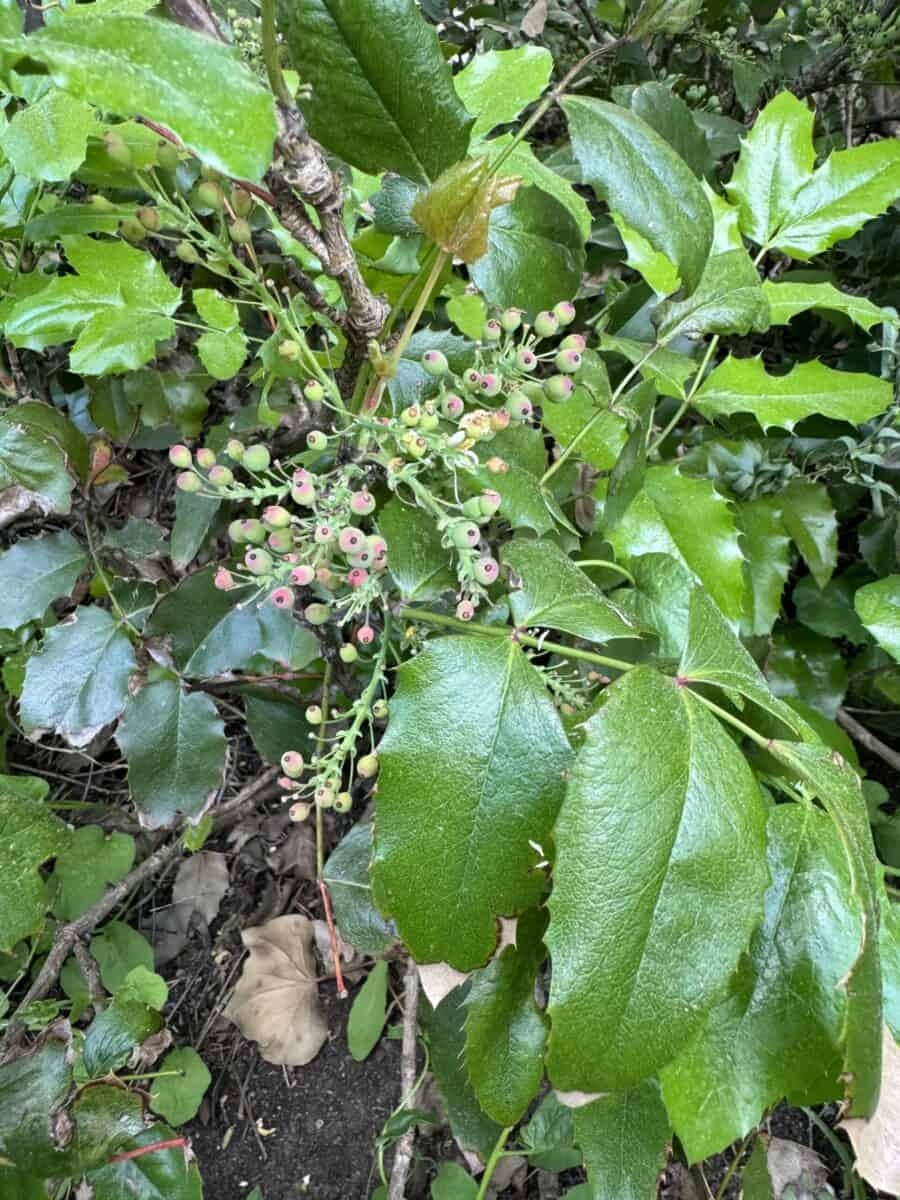
Oregon grape (mahonia) is a woody, low-growing evergreen shrub that is a solid choice for dry shade. Small yellow flowers are an early pollinator source in the spring, followed by dark blue berries. The leaves are glossy green and turn red or purple in the fall, but the downside is they are spiky and holly-like.
Cotoneaster
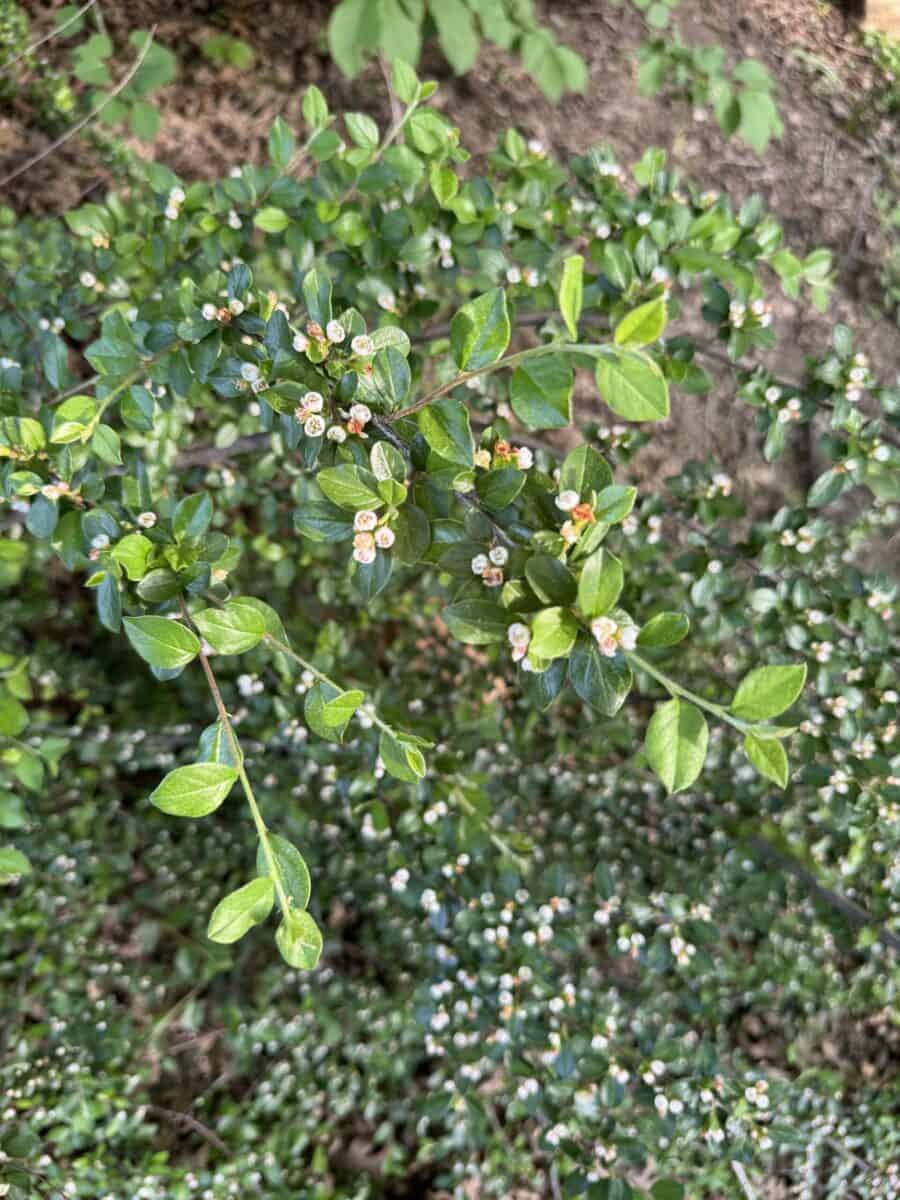
Cotoneaster is a low-growing spreading shrub. Its branches of dark green leaves display tiny pink or white blooms in the spring, followed by bright red berries in the fall. Some varieties are evergreen; the deciduous cultivars’ leaves change colors in the fall. This shrub will tolerate some shade.
Final thoughts on drought-tolerant plants
As you can see, I love me some plants. This list is by no means comprehensive, especially when you consider native plants for each region, but I have had great success with them and they make great universal choices for most areas. Of course, make sure to check your USDA growing zone before you purchase any plant to ensure it is appropriate for your area.
Hopefully you now see that a drought-tolerant landscape has just as much potential for beauty as any other.
If you’d like to take additional steps to save water in your yard and garden, check out Conserving Water in Your Landscape. And for more tips about eco-friendly gardening, head over to Creating a Sustainable Garden.


